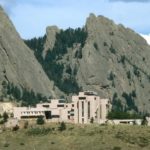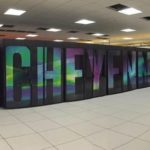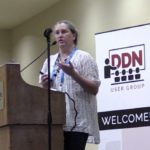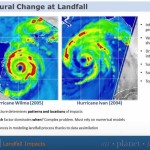NCAR in Boulder is seeking a Software Engineer in our Job of the Week. “This position focuses primarily on the development of tools to meet the needs for the NCAR/IT community, and the design, writing, implementation, and support for systems monitoring tools necessary for the management of the computer infrastructure. Support will also be provided to the research community for the development of web-based analysis tools and general web programming.”
Cheyenne Supercomputer Triples Scientific Capability at NCAR
The National Center for Atmospheric Research (NCAR) is launching operations this month of one of the world’s most powerful and energy-efficient supercomputers, providing the nation with a major new tool to advance understanding of the atmospheric and related Earth system sciences. Named “Cheyenne,” the 5.34-petaflop system is capable of more than triple the amount of scientific computing performed by the previous NCAR supercomputer, Yellowstone. It also is three times more energy efficient.
Video: Introduction to the Cheyenne Supercomputer
Cheyenne is a new 5.34-petaflops, high-performance computer built for NCAR by SGI. Cheyenne be a critical tool for researchers across the country studying climate change, severe weather, geomagnetic storms, seismic activity, air quality, wildfires, and other important geoscience topics. In this video, Brian Vanderwende from UCAR describes typical workflows in the NCAR/CISL Cheyenne HPC environment as well as performance […]
NCAR’s Evolving Infrastructure for Weather and Climate Research
Pamela Hill from NCAR/UCAR presented this talk at the DDN User Group at SC16. “With the game-changing SFA14K, NCAR now has the storage capacity and sustained compute performance to perform sophisticated modeling while substantially reducing workflow bottlenecks. As a result, the organization will be able to quickly process mixed I/O workloads while sharing up to 40 PBs of vital research data with a growing scientific community around the world.”
Video: Next-Gen Hurricane Prediction
“Since Hurricane Katrina made landfall in 20015, storm prediction technology has seen dramatic forward movement, from improved software to better use of observations and increased computing power – all aimed at giving emergency decision makers more time and specifics to help protect lives and property. The expert panelists in this Congressional Briefing outline research advances that have led to better forecasting of hurricane and tropical storm weather and impacts. And they spotlight research directions that hold promise for future improvements.”








